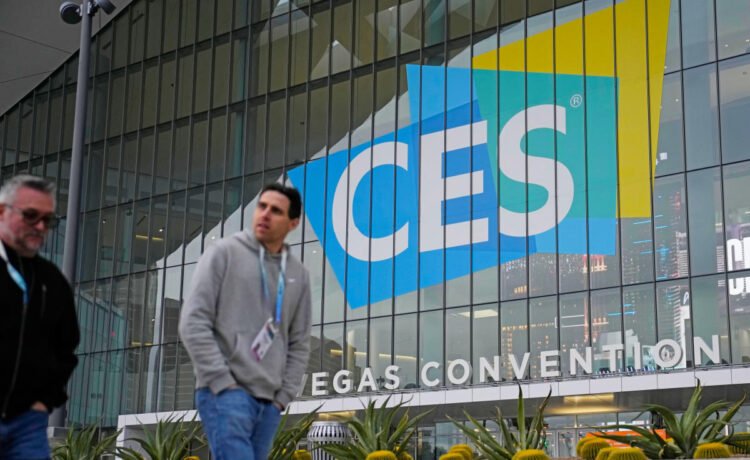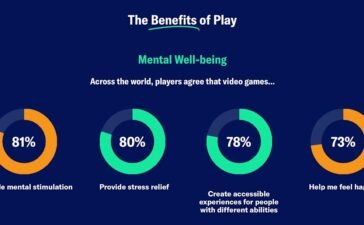The holiday season has barely begun, but some of us are already getting ready for CES 2025. Shortly after New Year’s Day, many from the Engadget team will be packing our bags to fly to Las Vegas, where we’ll be covering tech’s biggest annual conference. As usual, our inboxes are already flooded with pitches from companies that are planning to be there, and our calendars are filling up with appointments for briefings and demos.
Based on our experience, as well as observation of recent industry trends, it’s fairly easy to make educated predictions about what we might see in January. Over the years, the focus of the conference has spanned areas like TVs, cars, smart home products and personal health, with a smattering of laptops and accessories thrown in. At CES 2025, we expect to see AI get even more pervasive in all areas of the show floor. But we are also likely to get the usual slew of new processors and subsequent laptops, as well as all manner of wearables, trackers, bathroom appliances and massage chairs. Oh, the massage chairs.
There’s already a lot we know is coming, just by a cursory glance at the lineup published by the Consumer Technology Association (CTA). In addition to numerous panels and talks, there will be keynotes by NVIDIA’s founder and CEO Jensen Huang, Delta CEO Ed Bastian as well as C-suite executives from companies like Panasonic, SiriusXM, Waymo and Volvo group. That gives us a taste of who might make big announcements at the show.
In fact, some companies didn’t even wait till January to make their news known. LG, for example, continues its annual tradition of sharing its upcoming CES launches weeks ahead of the show by unveiling the 2025 refresh for its QNED evo line of LCD TVs. Hyundai Mobis, meanwhile, has said it will be giving us a look at its “Holographic Windshield Display,” something it’s claiming is a world’s first. Hyundai Mobis even shared a picture of what its booth at CES 2025 will look like, in case pictures of convention center booths get you excited.
If you’re already looking ahead to 2025 and are studiously researching what might be coming in January, here’s a taste of what our team expects to see at the show.
New video cards from AMD and NVIDIA
There’s no doubt 2025 is going to be a momentous year for PC gamers. NVIDIA is expected to debut its long-awaited RTX 5000 video cards at CES, while AMD CEO Lisa Su has confirmed we’ll see next-generation RDNA 4 GPUs early next year. Of the two companies, AMD could use the upgrade more. Its last batch of Radeon 7000 cards were decent mid-range performers, but they lagged far behind NVIDIA’s hardware when it came to ray tracing, and AMD’s FSR 3 upscaling also couldn’t compete with NVIDIA’s AI-powered DLSS 3.
“In addition to a strong increase in gaming performance, RDNA 4 delivers significantly higher ray-tracing performance and adds new AI capabilities,” AMD CEO Lisa Su said in an October earnings call.
As for NVIDIA’s new hardware, a rumor from the leaker OneRaichu (via DigitalTrends) suggested that the RTX 5090 could be up to 70 percent faster than the RTX 4090. (That’s a GPU that I previously described as having “unholy power.”) They also note that other “high level” cards could see 30 to 40 percent performance bumps. Those gains might be enough to tempt wealthy RTX 4090 owners to upgrade, but RTX 4070 and 4080 owners might want to skip this generation. For NVIDIA holdouts with RTX 3000 and earlier GPUs, though, next year may be the perfect time to upgrade. — Devindra Hardawar, senior reporter
AI PCs round 2
Last year, I predicted that AI PCs would dominate CES, and that mostly turned out to be true. As 2024 rolled on, we saw even more powerful NPUs in chips from Intel, AMD and Qualcomm. Microsoft also doubled down on AI PCs with its Copilot+ initiative, which gave a big marketing push for artificial intelligence features and premium specifications (like having at least 16GB of RAM).
Expect more of the same going into CES 2025, alongside even more AI being stuffed into every category of product imaginable. This year, in particular, PC makers are likely to gear up to take advantage of Windows 10 support ending next year. Instead of just upgrading your old computer to Windows 11, the likes of Dell and HP would rather you buy a whole new AI PC with the new OS pre-installed.
While 2024 was a year of endless AI PC hype, 2025 might end up being a year of reckoning. Microsoft’s long-delayed Recall feature is slowly trickling out to more users, but it’s already showing some glaring security holes, like failing to scrub social security and credit card numbers from screenshots. We’ve also been mostly underwhelmed with Apple Intelligence’s image generation capabilities. PC makers have been eager to talk up the potential of AI-powered features until now, but in 2025 they’ll have to actually prove they can live up to their fantastical claims. — D.H.
Earbuds that follow Apple’s lead on hearing health
I’m fully aware not every audio company has the ability to build out a clinical-grade hearing test and hearing aid features in their apps. However, Apple’s recent update for the AirPods Pro 2 should inspire the competition to offer some form of hearing health tools on their flagship products. Jabra was probably the best equipped to do this since parent company GN has extensive hearing aid experience. Sadly, the company announced earlier this year that it wouldn’t make earbuds anymore.
Samsung and Google could probably integrate something like what Apple made for the AirPods, given both companies’ existing health platforms. If they did, those announcements are unlikely to be made at CES, as both companies prefer to host their own standalone hardware events throughout the year.
That leaves Sennheiser as the biggest audio company that consistently launches earbuds and headphones at CES. Last year, it showcased multiple new models, including one with heart-rate tracking for workouts. Plus, it already offers hearing assistance with dedicated devices like the true wireless Conversation Clear Plus. Those earbuds are more hearing focused than for general content consumption, so it would be great to see Sennheiser bring some features from that product to its flagship Momentum line of earbuds. Perhaps a Momentum True Wireless 4 Pro or Plus is in the cards, but the current model is just nine months old.
Of course, there’s plenty of room for other companies to innovate here, and there will be no shortage of new earbuds in Vegas next month. We also tend to see a ton of assistive devices and technology launch at CES, from major accessibility companies like OrCam and all manner of smaller brands. I just hope some of the new tech includes more general hearing tools on the models most people will want to use. — Billy Steele, senior editor
Vehicle electrification goes sky high
As the growth of electric cars nears 10 percent of new models sold in the US, it’s easy to forget that wheeled vehicles aren’t the only kind of transportation seeing the shift to battery-powered propulsion. Flying taxis have been a mainstay of CES for the past few years, with concept vehicles from brands as large as Hyundai dotting the show floor in Vegas.
Granted, these contraptions look more like giant drones with cockpits than anything the Jetsons ever dreamed up. But with companies like Archer Aviation and Joby Aviation pledging to actually launch eVTOL services (electric vertical take-off and landing) in 2025, the era of air taxis may have landed for real this time. — Sam Rutherford, senior reporter
Turning more phones into satellite phones
Since Apple introduced Emergency SOS via Satellite on the iPhone 14 in 2022, we’ve seen a serious uptick in development in satellite communications. Not only did Apple expand its feature to allow for non-emergency communications, component makers like Qualcomm, too, tried to bring similar capabilities to Android devices. Snapdragon Satellite was announced at CES 2023, as a project between Qualcomm and Iridium, but the initiative did not gain popularity with smartphone companies, and was ultimately ended in November that same year.
Since then, Google launched satellite calling in Pixel 9 phones, while SpaceX’s Starlink satellite texting service has gone live in New Zealand via telco One NZ. In the US, T-Mobile opened up beta signups for its Starlink-powered satellite cell service this year. The skies are getting more crowded, too, with AT&T and partner AST SpaceMobile launching five satellites in September, as well as Amazon’s Project Kuiper looking to boost its satellite internet network with space lasers.
This year, Garmin launched the inReach Messenger Plus, which it describes as an “SOS Satellite Communicator with Photo and Voice messaging.” Though satellite hotspots like that have been around for years from companies like Iridium and GlobalSat, they’ve historically cost $800 to $1,000, and haven’t had the ability to send much more than a few lines of text. Garmin’s product may be an indicator of things to come — not only are we likely to see major phone makers embed satellite communication capability into future handsets, but in the interim we’re probably going to get a bunch of hotspots so we’ll never lose connectivity, not matter how far off the grid we get. And I wouldn’t be surprised if CES 2025 is rife with devices that let us tap into satellites to get help and talk to others. — Cherlynn Low, deputy editor
Expanded dialog improvement features on soundbars
When it comes to the main aspects of soundbars, there really isn’t a ton of innovation from year to year. Heck, Samsung’s biggest update last year was the addition of HDMI 2.1 support to its flagship model, which should’ve been there already. Companies have also been focused on the transition to cable-free everything, whether that’s wireless Dolby Atmos or wireless transmission boxes. Audio enhancement features are a place where companies can really rise above the fray, and tools like Sonos’ TV Audio Swap and Bose’s Personal Surround Sound are great examples of this. A key area nearly every company can improve is dialog boost, a feature that raises the volume or separates spoken word from background noise and music for better clarity.
Sonos made a huge leap in this regard on the Arc Ultra, offering two additional settings for its so-called Speech Enhancement. Previously, this was just an all-or-nothing toggle, which is how most companies handle their versions of this tool. Not only is the Sonos update customizable to a degree, it’s also just better, thanks in part to the redesigned architecture of its new premium soundbar. This is an obvious area where other companies can improve.
LG and Samsung typically announce new soundbars at CES, and there are plenty of smaller companies that will debut some too. I’d love to see all of them take dialog enhancements a step further and at the very least give multiple options for how it’s applied. LG has been using AI Sound Pro from its TVs since 2021 and Samsung offers something called Adaptive Sound on its home theater speakers. I would expect them both to generally improve the quality of their features, but I’m hoping they’ll expand the capabilities too. — B.S.
Update, December 17 2024, 12:40PM ET: This story has been updated to include the companies and CEOs that will be making keynotes at the show.
Update, December 20 2024, 11:55AM ET: This story has been updated to include LG and Hyundai Mobis’ announcements ahead of CES 2025.
Update, December 25 2024, 10:00AM ET: This story has been updated to include a prediction about satellite communication devices being everywhere at CES 2025.
If you buy something through a link in this article, we may earn commission.






